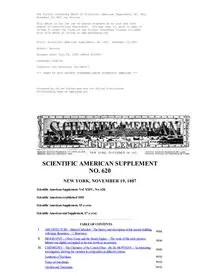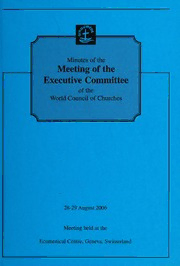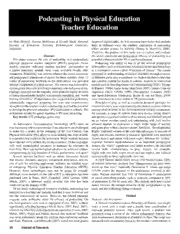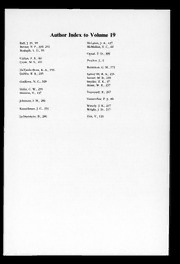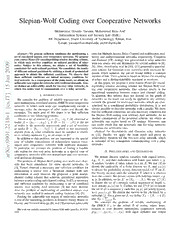
Preview Slepian-Wolf Coding over Cooperative Networks
Slepian-Wolf Coding over Cooperative Networks Mohammad Hossein Yassaee, Mohammad Reza Aref Information Systems and Security Lab (ISSL) EE Department, Sharif University of Technology, Tehran, Iran E-mail: yassaee@ee.sharif.edu, aref@sharif.edu Abstract—We present sufficient conditions for multicasting a ratesforMultipleAccessRelayChannelandmultisource,mul- set of correlated sources over cooperative networks. We propose tirelay and multidestination networks, respectively. Compress jointsource-Wyner-Zivencoding/sliding-windowdecoding scheme, and Forward (CF) strategy was generalized to relay networks 9 in which each receiver considers an ordered partition of other with one source and one destination by severalauthorsin [8], 0 nodes. Subject to this scheme, we obtain a set of feasibility [9]. Also, Avestimehr, et.al in [10], [11] proposed a quantize- 0 constraintsforeachorderedpartition.Weconsolidatetheresults map scheme for Gaussian relay networks with multicast de- 2 ofdifferentorderedpartitionsbyutilizingaresultofgeometrical mands which achieves the cut-set bound within a constant approach to obtain the sufficient conditions. We observe that n numberofbits.TheirschemeisbasedonWyner-Zivencoding these sufficient conditions are indeed necessary conditions for a Arefnetworks.Asaconsequenceofthemainresult,weobtainan at relays and a distinguishability argument at receivers. J achievablerateregionfornetworkswithmulticastdemands.Also, In this paper, we propose a joint Source-Wyner-Ziv encod- 5 wededuceanachievabilityresultfortwo-wayrelaynetworks,in ing/sliding window decoding scheme for Slepian-Wolf cod- 1 which two nodes want to communicate over a relay network. ing over cooperative networks. Our scheme results in the operational separation between source and channel coding. T] I. INTRODUCTION In addition, this scheme does not depend on the graph of I We consider the problem of reliable transmission of dis- networks, so the result can easily be applied to any arbitrary s. cretememorylesscorrelatedsources(DMCS)overcooperative network (In general for multi-user networks which are char- c networks in which each node can simultaneously encode a acterized by a conditional probability distribution, it is not [ message, relay the messages of other nodes and decode the always possible to describe networkswith a graph).We show 1 messages. The main goal of this paper is to find sufficient thatthesufficientconditions,arealsonecessaryconditionsfor v conditions to the following problem: the Slepian-Wolf coding over arbitrary Aref networks. As an 8 Given a set of sources U ={U :a ∈A} observed at another consequence of the proposed scheme, we obtain an 1 nodes A = {a ,··· ,a } ⊆AV (V a=j {1j,··· ,N} is the set achievable rate region based on CF strategy. Moreover, one 1 M 2 of nodes in the network) respectively and a set of receivers can easily check that our achievable rate for relay networks 2 at nodes B = {b ,··· ,b } ⊆ V which is not necessarily subsumes the achievable rates 1. disjoint from A, w1hat conKditions must be satisfied to enable obtained for deterministic and Gaussian relay networks 0 us to reliably multicast U to all nodes in B? in [11]. Finally, we apply the main result and prove an A 9 In addition to this problem,we are interested in the special achievability theorem for the two-way relay network, which 0 case of reliable transmission of independent sources (mes- is consisted of two transmitters communicating over a relay v: sages) over cooperative networks with multicast demands. networks. i In particular, we consider the problem of finding a feasible X rate region for two-way relay networks as a special case of II. PRELIMINARIES AND DEFINITIONS r cooperative networks with two transmitters and two receivers a We denote discrete random variables with capital letters, with multicast demands. e.g., X, Y, and their realizations with lower case letters x, y. The problem of Slepian-Wolf coding over multi-user chan- A random variable X takes values in a set X. We use |X| to nels has been considered for some special networks. In denote the cardinality of a finite discrete set X, and p (x) [1], Tuncel obtained a necessary and sufficient condition for X to denote the probability density function (p.d.f.) of X on X. multicasting a source over a broadcast channel with side For brevity we may omit the subscript X when it is obvious information at each receiver. He proposed a joint source- fromthecontext.We denotevectorswithboldfaceletters,e.g. channel coding scheme that achieves operational separation x, y. In addition,we let Xi =(X ,··· ,X ). We use Tn(X) betweensourcecodingandchannelcoding.In[2],anecessary 1 i ǫ to denote the set of ǫ-strongly typical sequences of length n, and sufficient condition for multicasting a set of correlated w.r.t.densityp (x)onX.Further,weuseTn(Y|x)todenote sources over acyclic Aref networks [3] has been derived. X ǫ thesetofalln-sequencey suchthat(x,y) arejointlytypical, Also the problem of multicasting of correlated sources over w.r.t. p (x,y). We denote the vectors in the jth block by a networks was studied in network coding literature [4], [5]. XY subscript[j]. Fora givensetS, we defineX ={X :i∈S} Finding the achievable rate region of multi-relay networks S i and R = R . isoneoftheinterestingproblemsinShannontheory.Basedon S i∈S i DecodeandForwardstrategy,[6]and[7]proposedachievable We conPsider the problem of reliable multicasting of the DMCS U to the subset B of nodes, where trans- A mission is over discrete memoryless cooperative network ThisworkwaspartiallysupportedbyIranian-NSFundergrantNo.84.5193- 2006 p(y1,··· ,yN|x1,··· ,xN) with input alphabet and output 1 alphabetXv andYv ateachnodev ∈V,respectively.Aformal H(US|UA\S) = mH(USm|UAm\S) definition of the problem is given below. 1 Definition 1: WesaythatthesetofDMCS,U canreliably = (I(Um;Yn|Um )+H(Um|Um Yn)) A m S bi A\S S A\S bi be transmitted over discrete memoryless cooperative network 1 to all nodes in B, if there exist positive integers (m,n) and a ≤ mI(USm;YWnC|UAm\S)+ǫ sequence of encoding functions (=a) 1H(Yn |Um )+ǫ f(m) :Um×Yt−1 →X for t=1,··· ,n m WC A\S v,t v v v (=b) 1 n H(Y |Um Yi−1X )+ǫ atallnodesv ∈V,wherefornon-sourcenodeswe letUv =∅ mX WC,i A\S WC WC,i and a set of decoding functions defined at each node b ; i=1 i n 1 g(m,n) :Um×Yn →Um ≤ mXH(YWC,i|XWC,i)+ǫ bi bi bi A i=1 fsourchaltlhbaitt∈heBpraosbmab,inlitygoPtro(ginb(imfin,nit)y(Uwbmiit,hYbmnni)g6=oeUsAto)voannei.shes (≤=c) mnnHH((YYWC,Q||XXWC,Q,)Q+)ǫ+ǫ m WC,Q WC,Q III. SUMMARY OFMAIN RESULTS (d) → H(Y |X ) (6) In this section, we provide a summary of our main results. WC WC The following theorem is the main result of the paper. where (a) follows because Yn is a function of Um, (b) Theorem 1: ThesetofDMCSUA canreliablybetransmit- follows from definition 1, (c)WiCs obtained by introduAcing a ted over cooperative network, if there exist auxiliary random standard time-sharing random variable Q and (d) follows, by variables YˆV such that for each S ⊆A, we have allowingm,n→∞andsettingYV =YV,Q andXV =XV,Q. H(US|UA\S)<bim∈Bin\S V⊇mWin⊇S:[I(XW;YbiYˆWC\{bi}|XWC) netNwoowrk,wleinecaornsdideteerrmtwinoistsicpecfiinailtec-fiaseelds onfetwaordketearnmdinAisrteicf bi∈WC network. For linear deterministic finite-field network, it is −I(YW;YˆW|XVYbiYˆWC\{bi})] (1) shown in [11] that the product uniform distribution achieves simultaneously the maximum of RHS of (4) for all W ⊆ V. where the joint p.d.f. of random variables factors as InArefnetwork,itisshownthattheRHSof(4)onlydepends p(uA)[ p(xv)p(yˆv|xv,yv)]p(yV|xV). (2) onthemarginaldistributions,i.e.,p(xv). Hence,lemma1and vY∈V (3) together imply the following theorem: Proof: We sketch the proof in the next section. Theorem 2: A set of correlated sources can reliably be Remark 1: Theconstraint(1) separatessourcecodingfrom multicast over a deterministic network, if for each S ⊆A the channel coding in the operational separation sense [1]. The constraint (3) is satisfied. Moreover, this constraint is indeed LHS of (1) represents the rate of Slepian-Wolf coding, while necessary for two classes of deterministic networks, namely the RHS of (1) provides an achievable flow through a cut linear deterministic finite-field network and Aref network. Λ=(W,WC) over the cooperative network. Now, we concentrate on finding an achievable rate region In the rest of this section, we consider some consequences for cooperative networks. Let R be the rate of message of of Theorem 1. First, assume that each channel output is a v the node v. The next theorem gives an achievable rate region deterministicfunctionofallchannelinputs,i.e.,y =g (x ). v v V for cooperative network. Setting Yˆ =Y in Theorem 1, we conclude that the reliable v v Theorem 3: An N-tuple (R ,R ,··· ,R ) is contained in transmission of DMCS over deterministic network is feasible 1 2 N the achievable rate region of cooperative network with mul- if there exists a product distribution p(x ) such that: v v ticast demands at each node bi ∈ B, if for each S ⊆ V the H(U |U )< min minQH(Y |X ) (3) following constraint holds: S A\S WC WC bi∈B\S Vb⊇i∈WW⊇CS: R < min min I(X ;Y Yˆ |X )− Itrnanthsmeifsosilolonwoinfgcolerrmelmatae,dwseouprcroevsidoevear dceotnevremrsineisftoicr creoloiapbelre- S bi∈B\S Vb⊇i∈WW⊇CS:(cid:2) W bi WC\{bi} WC ative network. I(YW;YˆW|XVYbiYˆWC\{bi}) + (7) oveLremamdaet1er:mIifniastsiectnoeftwDoMrkC,SthUenAtchaenrereelxiaisbtlsyabejominutltpi.cda.sft. where [x]+ = max{x,0} and the joint p.d.f. of (xV,(cid:3)yV,yˆV) factors as p(x )p(yˆ |x ,y )]p(y |x ). p(xV) such that v∈V v v v v V V Proof:QLetT bethelargestsubsetofV suchthattheRHS of (1) is nonnegativesubject to each S ⊆T (Note that if two H(US|UA\S)< min min H(YWC|XWC) (4) subsets T1,T2 have this property, then T1 ∪T2 also has this bi∈B\S Vb⊇i∈WW⊇CS: property, so such T is unique). Now let A = T in Theorem Proof: By Fano’s inequality, we have: 1. Assume U (v ∈A) have uniform distribution over the set v 1 ∀S ⊆V,b ∈B\S : H(Um|Um Yn)≤ǫ (5) Uv and be mutually independent. Substituting Rv = H(Uv) i m S A\S bi in Theorem 1 yields that U can reliably be multicast, if (7) T For each (W,bi) such that S ⊆ W ⊆ V and bi ∈ WC, we holds. Hence (R1,··· ,RN) is achievable (Note that Rv =0 have: for each node v ∈TC). Remark 2: Consider a relay network with node 1 as a Codebook generation at node v: Fix δ > 0 such that transmitter which has no channel output, i.e., Y1 = ∅, N −2 |Tǫn(Uv)|<2n(H(Uv)+δ). To eachelementofTǫn(Uv), assign relay nodes {2,··· ,N − 1} and node N as a destination a number wv ∈[2,2n(H(Uv)+δ)] using a one-to-one mapping. which has no channel input, i.e., X = ∅. Substituting Moreover, we assign one to each non-typical sequence u . N v R = ··· = R = 0 in Theorem 3 gives the following We denote the result by u (w ). For channel coding repeat 2 N v v achievable rate (R ) for relay network. independently the following procedure V times. We denote CF the resulting kth codebook by C (k). v RCF = min I(XS;YˆSC\{N}YN|XSC)− Choose2n(H(Uv)+I(Yv;Yˆv|Xv)+2δ) codewordsxv(wv,zv),each 1∈SS,⊆NV∈:SC (cid:2) drawn uniformly and independently from the set Tǫn(Xv) I(YS;YˆS|XVYNYˆSC\{N}) + (8) where zv ∈ [1,2n(I(Yv;Yˆv|Xv)+δ)]. For Wyner-Ziv cod- (cid:3) ing, for each xv(wv,zv) create 2n(H(Uv)+δ) lists Lv(wv′) It can be shown that this rate subsumes the achievable rate of with 2n(I(Yv;Yˆv|Xv)+δ) codewords each drawn uniformly [9, Theorem 3]. and independently from the set Tn(Yˆ |x ) where w′ ∈ Remark 3: Consider a two-way relay network with nodes ǫ v v v 1 and N as two transmitters, each demanding the message [1,2n(H(Uv)+δ)]. We denote the codewords of Lv(wv′) by of the other node, and N −2 relay nodes {2,··· ,N −1}. yˆv(wv′,zv′|xv) where zv′ ∈[1,2n(I(Yv;Yˆv|Xv)+δ)]. Substituting R = ··· = R = 0 and Yˆ = Yˆ = ∅ Encoding at node v: Divide the nB-length source stream 2 N−1 1 N unB into B vectors (u : 1 ≤ j ≤ B) where u = in Theorem 3 gives the following achievable rate region for v v,[j] v,[j] (u ,··· ,u ). We say that channel encoder re- two-way relay network. v,(j−1)n+1 v,jn ceives m = (m ,··· ,m ), if for 1 ≤ j ≤ B, u k =1,N : Rk = k∈SSm,⊆k¯iV∈n:SC (cid:2)I(XS;YˆSC\{k¯}Yk¯|XSC)− winaBs a+ss2igVvne−d3tobmlov,cv[k,1[]js]w∈h[e1r,e2vinn,([BHb]l(oUcvk)+bδ,)]w.eEnucseodtihnegcpoedrefbovorm,o[jks] I(YS\{k};YˆS\{k}|XVYk¯YˆSC\{k¯}) + (9) Cv(b mod V). For 1≤b≤B+2V −3, define: (cid:3) where ¯1=N and N¯ =1. m ,V ≤b≤B+V −1 Remark 4: Suppose the channel output of relay nodes be w = v,[b−V+1] v,[b] (cid:26) 1 ,otherwise a function of channel inputs, i.e., ∀v ∈ V\{1,N} : y = v g (x ).Setyˆ =y in(8),wededucethatthecut-setboundis v V v v In block 1, a default codeword, x (1,1) is transmitted. In achievablefor productdistribution.This is a generalizationof v block b > 1, by knowing z from Wyner-Ziv coding at [11, Theorem4.2.3]whichstates thatcut-setboundis achiev- v,[b−1] the end of block b−1 (described below), node v transmits able under product distribution for deterministic network. x (w ,z ). Remark 5: In [10], [11], authorsshow that by quantization v v,[b] v,[b−1] at noise level, Gaussian relay network achieves the cut-set Wyner-Ziv coding: At the end of block b, node v knows bound within 5|V| bits. It can be shown using [11, Appendix (xv,[b−1],yv,[b−1]) and wv,[b] (note that mv is available non- A.5]andquantizationatthenoiselevelthattheachievablerate causally at node v), considers the list Lv(wv,[b]) and declares ofRemark2achievesthecut-setboundwithin 3|V| −1bits. that zv,[b−1] =zv is received if zv is the smallest index such A similar result holds for two-way Gaussian r(cid:4)el2ay n(cid:5)etwork. that (yˆv,[b−1](wv,[b],zv|xv,[b−1]),xv,[b−1],yv,[b−1]) are typi- cal. Since Lv(wv,[b]) contains 2n(I(Yv;Yˆv|Xv)+δ) codewords, IV. PROOF OF THEOREM1 such z exists with high probability (See Table I which v We prove Theorem 1 in three steps. In subsection IV-A, describes encoding for network with four nodes). weproposeajointsource-Wyner-Zivencoding/slidingwindow Decoding at node bi: Let C(bi) = [L1,··· ,Lℓ] decoding scheme. For encoding, each node first compresses be an ordered partition of the set V−bi = V\{bi}. its observation using Wyner-Ziv coding, then jointly maps its We propose a sliding window decoding with respect to source sequence and compressed observation to a codeword. C(bi). Define sv,[b] = (wv,[b],zv,[b−1]). Suppose that Inthedecodingpartofthescheme,eachreceiverconsidersan (sL1,[b−1],sL2,[b−2],··· ,sLℓ,[b−ℓ]) were decoded correctly ordered partition of other nodes to decode jointly the sources at the end of block b − 1. The node bi, declares that andthecompressedobservationsofothernodes.Weprovidea (sL1,[b],··· ,sLℓ,[b−ℓ+1]) = (sˆL1,··· ,sˆLℓ) was sent, if for each 1≤k ≤ℓ+1, set of sufficientconditionsfor reliable transmission of DMCS over cooperative networks. In subsection IV-B, by applying a result of geometrical approach [9], we unify the results if 1≤b−k+1: x (sˆ ),yˆ (sˆ |x ) of subsection IV-A under different ordered partitions. The “ Lk Lk Lk−1 Lk−1 Lk−1,[b−k+1] result of this section, yields Theorem 1 with an additional ,x ,yˆ ,y ,x ∈Tn Lk,[b−k+1] Lk−1,[b−k+1] bi,[b−k+1] bi,[b−k+1]” ǫ set of constraints corresponding to reliable decoding of the if V ≤b−k+1≤V +B: (u (wˆ ), compressed observations of other nodes. In subsection IV-C, Lk Lk u (w ),u )∈Tn (10) we show that without loss of generality, we can neglect these Lk Lk,[b−k+1] bi,[b−k+1] ǫ constraints. This completes the proof. whereLk =∪k−1L ,L =L =∅ands =(w ,z ). A. Joint Source-Wyner-Ziv coding/Sliding Window Decoding Note that at thej=e1ndjof b0lock Bℓ++1 V +ℓ−2L,kthe veLctkor Lmk A We transmit m = nB length source over cooperative is decoded. Since each (uv,[j] :v ∈A,1≤j ≤ B) is typical network in B +2V −3 blocks of length n where V is the with high probability, we find the source sequence unB with A cardinality of V. small probability of error. TABLEI ENCODINGSCHEMEFORMULTICASTOVERNETWORKWITHV ={1,2,3,4}(THEENCODINGSCHEMEOFOTHERNODESISSIMILAR) Node Block1 Block2 Block3 Block4 Block5 Block6 Block7 u1(m1[1]) u1(m1[2]) 1 x1(1,1) x1(1,z1[1]) x1(1,z1[2]) x1(m1[1],z1[3]) x1(m1[2],z1[4]) x1(1,z1[5]) x1(1,z1[6]) yˆ1(1,z1[1]|x1[1]) yˆ1(1,z1[2]|x1[2]) yˆ1(m1[1],z1[3]|x1[3]) yˆ1(m1[2],z1[4]|x1[4]) yˆ1(1,z1[5]|x1[5]) yˆ1(1,z1[6]|x1[6]) yˆ1(1,z1[7]|x1[7]) u2(m2[1]) u2(m2[2]) 2 x2(1,1) x2(1,z2[1]) x2(1,z2[2]) x2(m2[1],z2[3]) x2(m2[2],z2[4]) x2(1,z2[5]) x2(1,z2[6]) yˆ2(1,z2[1]|x2[1]) yˆ2(1,z2[2]|x2[2]) yˆ2(m2[1],z2[3]|x2[3]) yˆ2(m2[2],z2[4]|x2[4]) yˆ2(1,z2[5]|x2[5]) yˆ2(1,z2[6]|x2[6]) yˆ2(1,z2[7]|x2[7]) Error Probability Analysis: We bound the probability of the proposed encoding scheme, to prove lemma 2. But in error in (10) as follows: general, since the ordered partitions corresponding to each receiver for reliable decoding are different, it is not possible P = P ∃(sˆ ,··· ,sˆ )∈ to obtain a same offset encoding scheme for all destinations. e L1 Lℓ ∅6=SX⊆V−biWX⊆S (cid:16) TanhyisinmfaokrmesatciloenarinwhthyetfiherstenVco−di1ngbslocchkesm.e does not transmit NS(1W) ×···×NS(ℓW) :(sˆL1,··· ,sˆLℓ) satisfies (10) (11) Remark 7: Intheerroranalysis,weonlycomputethe error (cid:17) corresponding to block V +ℓ−1 ≤ b ≤ V +B, for which where N(k) is the following set: all ℓ consecutive blocks (b−ℓ+1,··· ,b) contain sources’ S,W information.However,itcanbeshownthattheconstraintsare NS(k,W) ={sLk :∀t∈Sk and t′ ∈Wk,st 6=st,[b−k+1] otobtbalioncekdsfrtohmatedroronroatnahlayvseisionffoortmheartibolnocakbsowuthtihchecsoorurrecsepso,nids wt′ 6=wt′,[b−k+1]andsSkC =sSkC,[b−k+1],wWkC =wWkC,[b−k+1]} dominated by (14). where S = S ∩L , W = W ∩L , SC = SC ∩L and k k k k k k WC =WC ∩L . B. Unified Sufficient Condition k k The probability inside the summation (11) represents the In this subsection, we provide a set of sufficient conditions probability of error corresponding to incorrect decoding of thatdonotdependonaspecifiedorderedpartition.Todothis, sS such that wS\W was decoded correctly. Denote this prob- weneedthefollowinglemmawhichwaspartiallystatedin[9] ability by Pe,S,W. We compute it in equation (12) shown asa resultofgeometricalpropertiesofachievablerateregions at the top of the next page, in which (a) follows, because obtained from sequential decoding: ℓ ≤ V and the codebook generation of any V consecutive Lemma 3: LetF bethecollectionofallorderedpartitions Z blocksareindependent.Moreover,the codebookgenerationis of a set Z. For each C=[L ,··· ,L ]∈F , define 1 ℓ Z independentof source stream and the sourcesare i.i.d., so the source sequences are generated independently in consecutive RC ={(R1,··· ,R|Z|)∈R|Z| :∀S ⊆Z blocks.(b)followsfromthefactthatx (s )andyˆ (s |x )were ℓ+1 Tdrnaw(Yˆn|uxni)f,orrmeslpyeacntidveilnyd.ependentlyfrotmtthesetstTǫnt(Xtt)and RS ≥Xk=1H(Y˜Sk−1X˜Sk|X˜SkCY˜SkC−1X˜LkY˜Lk−1Z˜)} (15) ǫ t t Note that each (z : t ∈ S) and (w : t′ ∈ W) take t t′ then for any joint distribution p(x˜ ,y˜ ,z˜), the following 2n(I(Yt;Yˆt|Xt)+δ) and 2n(H(Ut′)+δ) values, respectively. This identity holds: Z Z fact, (11) and (12) together imply that for reliable decoding, for each (S,W) such that W ⊆S, we must have: RC ={(R1,··· ,R|Z|)∈R|Z| :∀S ⊆Z ℓ+1 C[∈FZ XI(Yt;Yˆt|Xt)≤XH(XtYˆt)−X`H(UWk|UWkCULkUbi) RS ≥H(Y˜SX˜S|X˜SCY˜SCZ˜)} (16) t∈S t∈S k=1 Proof: The proof is omitted due to the space limitation. +H(XSkYˆSk−1|XSkCYˆSkC−1XLkYˆLk−1YbiXbi)´ (13) Now consider the RHS of (14). Since the random variables NotethattheRHSof(13)takestheminimumvalueforW = (U ) and (X ,Yˆ ,Y ) are independent, the RHS of (14) A V V V S. Hence we proved the following lemma: can be expressed in the form of (15) with Z = V , Lemma 2: The set of DMCS UA can reliably be multicast X˜ = (X ,U ), Y˜ = Yˆ and Z˜ = (Y ,X ,U ). For e−abcih overcooperativenetworkto the subsetB ofnodes,if foreach t t t t t bi bi bi bi ∈B,thereisanorderedpartitionC(bi) ofV\{bi}suchthat v ∈V, define Rv =H(XvYˆv)−I(Yv;Yˆv|Xv) and let for each S ⊆V , the following constraint holds: −bi ℓ+1 R(bi) =(R1,··· ,Rbi−1,Rbi+1,··· ,RV) XH(XtYˆt)−I(Yt;Yˆt|Xt)≥X`H(USk|USkCULkUbi) Lemma 2 states that UA can be multicast over the network, t∈S +H(XSkYˆSk−1|XSkCYˆSk=kC−11XLkYˆLk−1YbiXbi)´ (14) RifCfo(bri)e.aAchppblyiitnhgerleememxiast3s,Cw(ebic)on∈clFudVe−tbhiastuscuhchthCat(biR)(ebxi)is∈ts iff : whererandomvariables(x ,y ,yˆ )aredistributedaccording V V V to (2). ∀b ∈B, S ⊆V : Remark 6: If there is only one destination, one can use i −bi offset encoding scheme [6], [7] which has less delay than RS(bi) ≥H(YˆSXS|XSCYˆSCYbiXbi)+H(US|USCUbi) (17) ℓ+1 P (=a) P (x (sˆ ),yˆ (sˆ |x ),x ,yˆ ,y ,x )∈Tn e,S,W Lk Lk Lk−1 Lk−1 Lk−1,[b−k+1] Lk,[b−k+1] Lk−1,[b−k+1] bi,[b−k+1] bi,[b−k+1] ǫ (sˆL1X,···,sˆLℓ) kY=1h (cid:0) (cid:1) ∈NS(1W) ×···×NS(ℓW) ×P (u (wˆ ),u (w ),u )∈Tn Lk Lk Lk Lk,[b−k+1] bi,[b−k+1] ǫ (cid:0) (cid:1)i (=b) ℓ |N(p)|ℓ+1 |Tǫn(XSk,YˆSk−1|xSkC,yˆSkC−1,xLk,yˆLk−1,ybi,xbi)| × |Tǫn(UWk|uWkCuLkubi)| (12) pY=1 SW kY=1(cid:0) t∈Sk|Tǫn(Xt)| t′∈Sk−1|Tǫn(Yˆt′|xt′)| t∈Wk|Tǫn(Ut)| (cid:1) Q Q Q Note that we can write (17) in the following form which V. CONCLUSIONS will be used in the subsection IV-C to complete the proof This paper obtained sufficient conditions for multicasting of Theorem 1: a set of correlated sources over a cooperative network. The ∀S ⊆A\{bi}: sufficient conditions resulted in an operational separation H(US|UA\S)≤ Wm⊇inS RW(bi)−H(YˆWXW|XWCYˆWC\{bi}Ybi) between source and channel coding. It was shown that these bi∈WC sufficient conditions are also necessary for the Aref network. C.∀SFi⊆naAl RCe\s{ublit}:RS(bi)−H(YˆSXS|XSCYˆSC\{bi}Ybi)≥0 (18) Anestwaosrkpewciaasldcearsiev,edananadchtiheevarbesleulrtawteasresgpieocnififeodr tcooothpeerraetliavye networkandtwo-wayrelaynetwork.Moreover,itwaspartially This subsection claims that for each b , we can reduce the i shownthattheseachievablerateregionssubsumesomerecent constraints of (18) to the first term of it. We prove this by achievable rate regions which were derived using Wyner-Ziv induction on |V |. If |V | = 1, there is nothing to prove. −bi −bi coding. Now suppose the induction assumption is true for all k < |V |. For each Z ⊆ V which contains b and each S ⊆ −bi i VI. ACKNOWLEDGEMENT Z\{b }, let i The authors wish to thank M. B. Iraji and B. Akhbari for hZ(bi)(S)=RS(bi)−H(YˆSXS|XZ\SYˆZ\(S∪{bi})Ybi) comments that improved the presentation. Assume there is a subset T of AC\{bi} such thath(Vbi)(T)< REFERENCES 0. For each W ⊆V observe that, −bi [1] E.Tuncel. “Slepian-Wolfcodingoverbroadcastchannels”. IEEETrans. hV(bi)(W∪T)=hV(bi)(T)+RW(bi\)T− Inform.Theory,52(4):1469–1482 ,2006. H(YˆWXW|XWC\TYˆWC\(T∪{bi})Ybi) [2] oSv.eBr.AKroerfadnaetawnodrkDs”..VainsuPderovacn..IE“EBEroaIndtc.asStymanpd.SInlefopriamn.-WThoelofrmyu(lItSicITas)t, <RW(bi\)T −H(YˆWXW|XWC\TYˆWC\(T∪{bi})Ybi) [3] 2M0.08R,.pAp.r1e6f.56“-I1n6fo6r0m.ation flow in relay networks”. Ph.D dissertation, ≤RW(bi)−H(YˆWXW|XWCYˆWC\{bi}Ybi) [4] ST.taHnfoo,rdR.UKniove.,ttCerA,.MOc.tM19ed8a0r.d, M. Effros, J. Shi, and D. Karger. “A =h(bi)(W) (19) random linear network coding approach to multicast”. IEEE Trans. V Inform.Theory,52(10):4413–4430 ,2006. Using(19),thefirsttermof(18)canbesimplifiedasfollows: [5] M. Bakshi and M. Effros. “On achievable rates for multicast in the presenceofsideinformation”. inProc.IEEEInt.Symp.Inform.Theory H(U |U ) ≤ min h(bi)(W) (ISIT),2008,pp.1661-1665. S A\S V [6] L. Sankar, G. Kramer and N. B. Mandayam. “Offset encoding V⊃W⊇S: bi∈WC for multiple-access relay channels”. IEEE Trans. Inform. Theory, 53(10):3814–3821, 2007. (=a) min h(bi)(W ∪T) [7] L.-L.Xie and P. R. Kumar. “Multisource, multidestination, multirelay V V⊃W⊇S: wireless networks”. IEEE Trans. Inform. Theory, 53(10):3586–3595, bi∈WC 2007. (b) [8] G. Kramer, M. Gastpar, and P. Gupta. “Cooperative strategies and ≤ min h(bi) (W\T) capacity theorems for relay networks”. IEEE Trans. Inform. Theory, V\T Vb⊃i∈WW⊇CS: 51(9):3037–3063 ,2005. [9] M. H. Yassaee and M. R. Aref. “Generalized compress-and-forward = min h(bi) (W) (20) strategy forrelay networks”. in Proc.IEEEInt. Symp. Inform. Theory V\T V\T⊃W⊇S: (ISIT),2008,pp.2683-2687. bi∈WC [10] A. S. Avestimehr, S. Diggavi and D. Tse “Approximate capacity of where (a) followsfrom (19), because S ⊂W∪T and b ∈/ T gaussian relay networks”. in Proc. IEEE Int. Symp. Inform. Theory i and (b) follows from the first inequality in (19). (ISIT),2008,pp.474-478. [11] A.S.Avestimehr. “Wireless network information flow:adeterministic Now by induction assumption, the last term of (20) corre- approach”. Ph.Ddissertation, Berkeley Univ,CA.Oct2008. spondstothefeasibilityconstraintsofreliabletransmissionof U to node b overcooperativenetworkwith the set of nodes A i V\T. Hence U can reliably be transmitted to node b over A i original network. This proves our claim. Now it is easy to see that the first term of (18) is equivalent to (1), that proves Theorem 1.
The list of books you might like

Can’t Hurt Me: Master Your Mind and Defy the Odds

The Spanish Love Deception

The Subtle Art of Not Giving a F*ck

The Silent Patient

Changes in the Living Arrangements of the Elderly
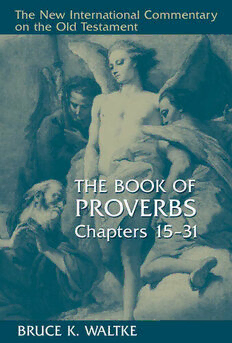
The Book of Proverbs, Chapters 15-31
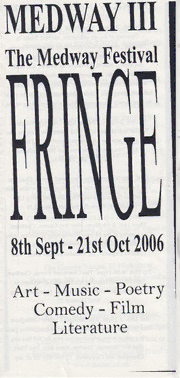
The Medway Festival Fringe 2006 Program
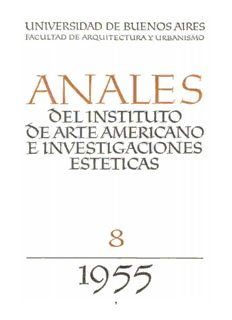
Anales N°8

Betty Cornell's Teen-Age Popularity Guide
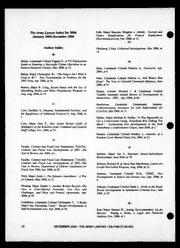
The Army Lawyer 2006: Index

lactoglobuline et de la -caséine sur la composition du lait et son aptitude fromagè
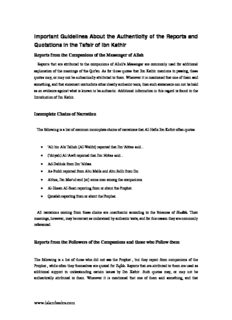
Tafsir Ibn Kathir abridged
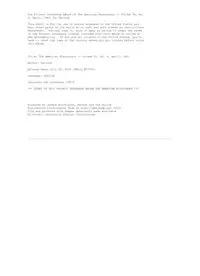
The American Missionary Volume 36 No 4 April 1882 by Various
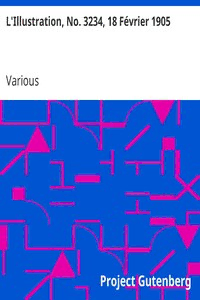
L'Illustration, No. 3234, 18 Février 1905 by Various
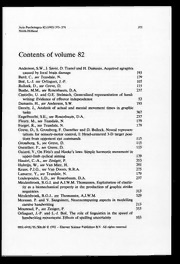
Acta Physiologica 1993: Vol 82 Table of Contents
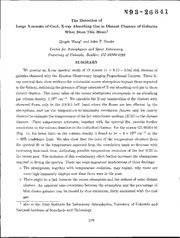
NASA Technical Reports Server (NTRS) 19930017652: The detection of large amounts of cool, x ray absorbing gas in distant clusters of galaxies. What does this mean?
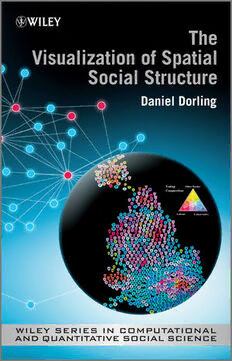
Vitamin D Handbook: Structures, Synonyms, and Properties
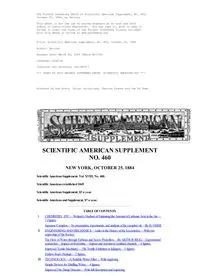
Scientific AmericanSupplement OCTOBER 25 1884
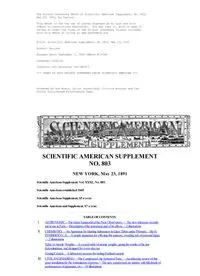
Scientific AmericanSupplement May 23 1891
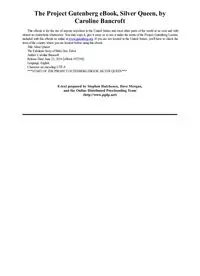
Silver Queen by Caroline Bancroft
